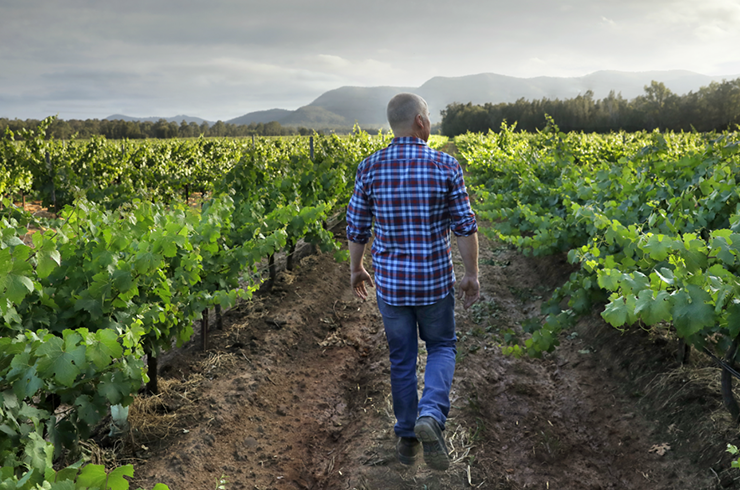The Purbricks are one of the First Families of Wine in Australia, and their Nagambie Lakes winery Tahbilk is home to some of the country’s oldest and most important vines. Among those is the largest single holding of marsanne in the world. This rare white variety was fortuitously planted at Tahbilk more than 150 years ago, so the winery has long had a special relationship with the grape (see the timeline of marsanne at Tahbilk below).
With marsanne in limited production here and overseas, Tahbilk has a stronghold, particularly when it comes to single-varietal styles. According to fourth-generation winemaker Alister Purbrick, only a handful of others produce straight-up marsanne locally. Even in its spiritual home of France’s Rhone Valley, marsanne is most often blended with roussanne and/or viognier.
Tahbilk produces a range of marsanne wines, including a sparkling (available exclusively to Wine Club members), a cane-cut dessert version and a couple of blends. But its core releases are the Estate, Museum Release and 1927 Vines.
The Estate Marsanne is made to ensure it drinks beautifully when young, full of bright, fresh fruit flavours. A portion of that wine is held back for the Museum Release at around five years of bottle age, offering the chance to compare the two side-by-side without having to wait. “I enjoy marsanne when it’s around five to ten years of age as it’s still got a bit of fresh fruit flavour, but also some complexity,” Alister says.
Their pinnacle is the 1927 Vines Marsanne, only released once it has received a raft of wine-show accolades, usually at around six or seven years of age. Due to the singular way it is made, the 1927 Vines will last for a minimum of 40 years with careful cellaring. Tahbilk is the only winery to craft such a marsanne, and James Halliday regularly sings its praises, with the 2012 featuring in his recent Top 100 Wines with 97 points.-
Tahbilk flagship marsannes
-
Tahbilk
Marsanne 2018
-
Tahbilk
Museum Release Marsanne 2011
-
Tahbilk
1927 Vines Marsanne 2012
Tahbilk marsanne: a timeline
1860s: Ludovic Marie, who in spite of his Burgundian heritage first made wine in the Cotes du Rhone region of France, plants marsanne at Tahbilk. Ludovic has an affinity with the Rhone varieties, including marsanne, and decides Nagambie has the right climate for them to thrive, so he goes about laying them in the ground. Fortified wines, spirits and beer are the drinks of the day, and the first plantings of marsanne are used as a sherry base.
1880s: Phylloxera strikes Victoria, which sadly decimates the earliest marsanne vines at Tahbilk.
1925: Reginald Purbrick purchases Tahbilk. He decides to travel with his son Eric Purbrick to visit his newly acquired land, which he plans to break up into dairy blocks. For Reginald, it’s a real-estate play, and he has no interest in the property’s history with wine. Thankfully, Eric falls in love with the site and spends the next few years convincing his father to revive the vineyard instead of turning it into a dairy farm. Eric wins in the end, with the proviso that he has to move to Australia and manage the revitalisation of the winery.
1927: While still in London and completing his law degree at Cambridge University, Eric decides he wants to replant marsanne at Tahbilk, which he instructs the property manager to do from afar. That planting becomes the oldest block on the site today, and the source of Tahbilk’s award-winning 1927 Vines wine.
1998: Tahbilk begins making its single vineyard 1927 Vines Marsanne – a distinctive wine with huge cellaring potential, expressing itself best at around 40 to 50 years of age. “I was keen to make a white wine that would be a legacy for the future,” says fourth-generation winemaker Alister Purbrick. “While we could roll out reds that live to 30, 40, 50 years of age that stand among the best in the world, we hadn’t achieved that with a white wine, so that was my goal,” he adds. The 1927 Vines Marsanne begins its life as a water-white, high-acid wine that undergoes a magical evolution in bottle: “It’s a classic ugly duckling into beautiful swan story,” Alister says.
Head to Tahbilk to browse the extensive range of marsanne wines.






